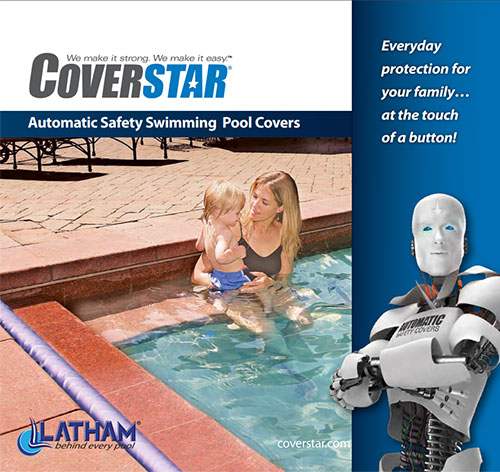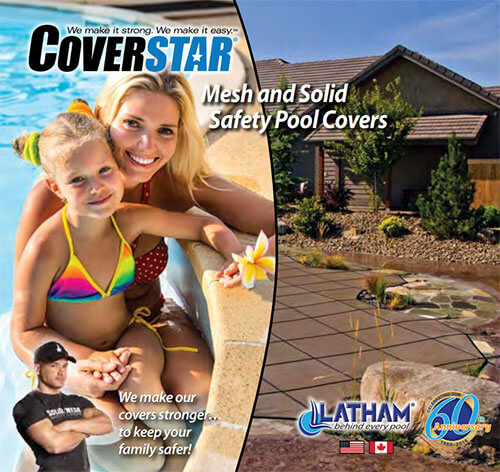A Coverstar pool cover is an integral part of your swimming pool’s safety gear setup.
Choose from mesh or solid covers to prevent children and pets from accidentally entering the water when you are not there.
These products also protect your investment from the damage that debris and constant sunlight exposure can cause.
Technicians custom build each cover to fit the unique shape and size of your pool.
But with so many products available to you, it can be difficult for a first-time buyer to select the right set-up.
This Coverstar pool cover introductory guide answers your questions.
Q: Why do you need an automatic pool cover?
A: Automatic pool covers contribute to pool safety.
The Southern Nevada chapter of the International Code Council explains that more than 80 percent of the annual 7,000 drowning deaths happen in residential pools.
Each year, approximately 5,000 children under the age of 14 undergo hospitalization for near-drownings.
These statistics underscore the importance of pool safety.
Along with providing adult supervision whenever children are swimming, take your commitment to safety a step further. Keep children – and adults – out of the water when you cannot be there.
Not surprisingly, Coverstar technicians refer to their covers as “horizontal fences.”
Q: Should you buy an automatic or a solid/mesh safety cover?
A: Automatic pool covers operate with a weatherproof toggle switch. It locks in place, which puts you in control of opening or closing it.
If you like the idea of going high-tech, consider the installation of a touchpad with wifi or wireless operations.
Children or pets will not get past these horizontal fences.
In addition to providing pool safety, there are also other reasons for relying on automatic pool covers.
- Reduction of pool heating costs. Because the heat stays contained in the water, it costs less to heat it during the season.
- A decrease in chemical use. Experts suggest that you can reduce pool chemical use by about 70 percent when installing a cover.
- Drop in evaporation. Keep more water in by closing off the pool to the heat of the midday sun. Technicians register a 90-percent decrease in evaporation.
Solid and mesh safety covers lack the convenience that an electric pool cover brings to your property.
That said, they function well for safety purposes. The use of box stitches reinforces the material.
Put the product in place with deck mounts that consist of heavy-duty-hardware.
Q: Do electric or manual pool covers meet your needs better?
A: An electric pool cover automates the task of covering and uncovering the expanse. There are no single-coil springs that you need to undo manually.
A secured key switch eliminates unauthorized pool use. When you go on vacation and entrust your home to a house sitter, you don't have to worry about anyone opening up the pool for an impromptu party.
And, if you do want to give consent for someone to use it in your absence, you can communicate your four-digit access code.
The biggest difference between a manual and an electric pool cover is the convenience and ease of operation.
Both products seal your pool and protect the water quality.
Both offer safety enhancements.
However, unless you enjoy the manual work of undoing, storing, and redoing a non-electric cover, consider the automated version instead.
Q: How do trained technicians install a Coverstar pool cover?
A: Trained technicians have plenty of experience with the installation of customized pool covers.
They bring a set of open-end wrenches, know the right nut drivers to pick, and will not shy away from the electrical work that goes into the mounting of an automatic cover.
These experts typically work with your local Coverstar dealer.
Installers set up an appointment when it is convenient for you. Next, they come out, take measurements, and make a note of the job’s scope.
From there, they will consult with you on the likely duration of the installation. Although not strictly necessary, most homeowners like to be on the premises when the technician does the setup.
When finished, the expert walks you through the cover’s use, which ensures that you feel comfortable with the setup before the installer heads back to the shop. (If you do have a question later on, just call the local dealer.)
Q: Is it difficult to maintain pool covers?
A: Maintaining a pool cover is easy. The sturdy construction of the material prevents many of the problems you might encounter with other products.
Typically, four tips see you through the season and beyond:
Keep water levels steady.
The water supports the weight of the cover. If it drops too low, it can cause problems for the cover and its mechanisms.
Clean up detritus.
Decaying leaves, seed pods, and other organic materials can discolor your pool cover.
Because natural waste attracts animals, you may also have to deal with feces and urine. These contain acids that can weaken the material in spots.
Cleaning up the leaves occasionally is easy and makes sense.
Always secure the cover.
It is tempting just to put it in place and call it a night. But doing so defeats the purpose of safety.
It also makes the membrane susceptible to wind damage.
Conduct visual inspections.
No matter which type of cover you select, take the time to inspect the product occasionally.
Look for tiny tears that might come from animal claws.
Ensure that the webbing stitches are in good shape.
For older covers, touch the material in various places to gauge its suppleness. Brittle surfaces may fail.
Of course, if you have any questions or just want to have another pair of eyes taking a look, contact your friendly technicians for a quick service call.
Who knew that owning and maintaining a pool cover could be this simple?
If you're considering an automatic or mechanical Coverstar Pool cover and would like more information, download the brochures using the links below.
Then, if you have any questions about which type cover is best suited to your needs or would like to discuss any aspect of installation and maintenance, gives us a call at (615) 452-POOL (7665).


